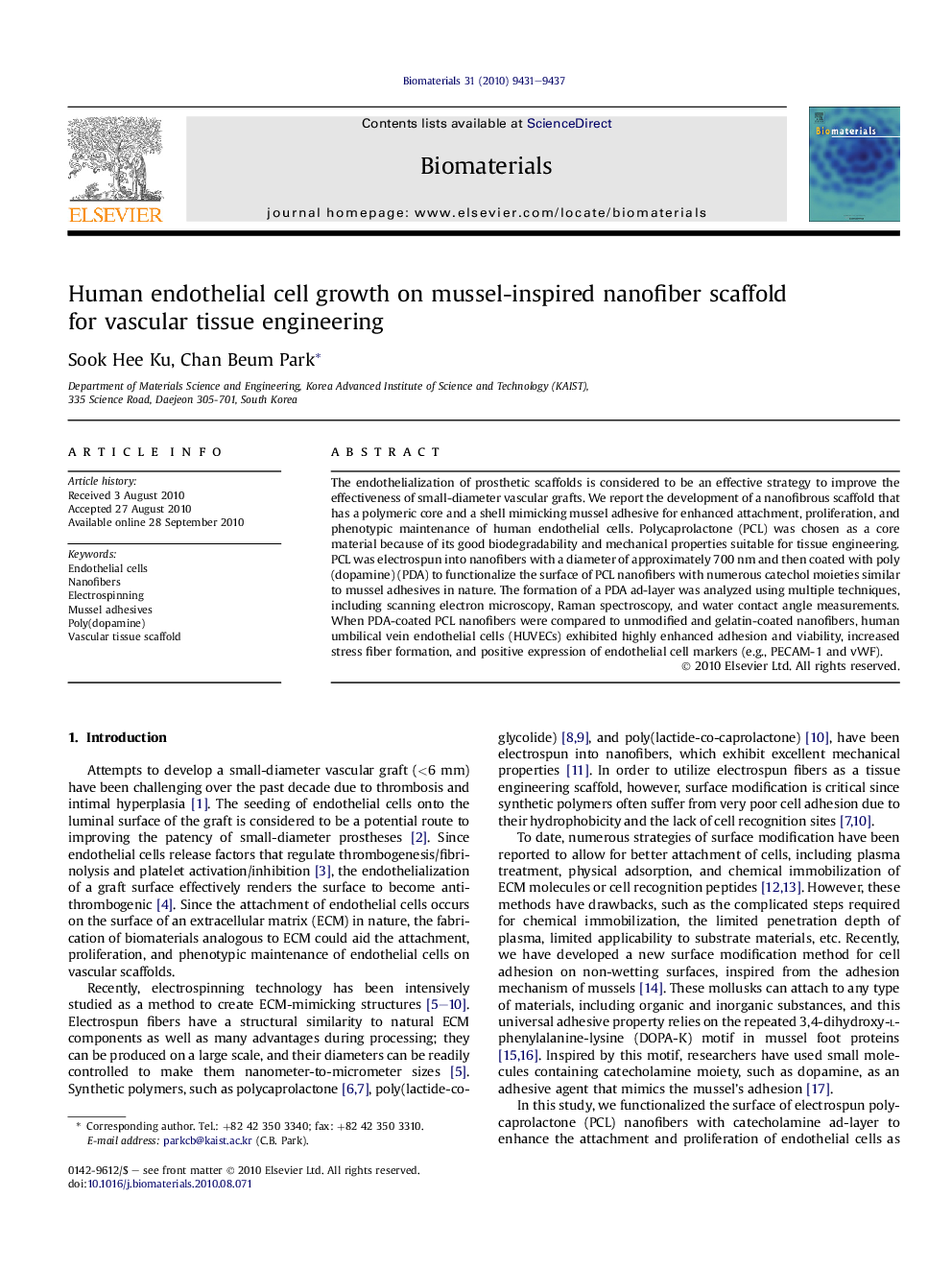| Article ID | Journal | Published Year | Pages | File Type |
|---|---|---|---|---|
| 10229974 | Biomaterials | 2010 | 7 Pages |
Abstract
The endothelialization of prosthetic scaffolds is considered to be an effective strategy to improve the effectiveness of small-diameter vascular grafts. We report the development of a nanofibrous scaffold that has a polymeric core and a shell mimicking mussel adhesive for enhanced attachment, proliferation, and phenotypic maintenance of human endothelial cells. Polycaprolactone (PCL) was chosen as a core material because of its good biodegradability and mechanical properties suitable for tissue engineering. PCL was electrospun into nanofibers with a diameter of approximately 700Â nm and then coated with poly(dopamine) (PDA) to functionalize the surface of PCL nanofibers with numerous catechol moieties similar to mussel adhesives in nature. The formation of a PDA ad-layer was analyzed using multiple techniques, including scanning electron microscopy, Raman spectroscopy, and water contact angle measurements. When PDA-coated PCL nanofibers were compared to unmodified and gelatin-coated nanofibers, human umbilical vein endothelial cells (HUVECs) exhibited highly enhanced adhesion and viability, increased stress fiber formation, and positive expression of endothelial cell markers (e.g., PECAM-1 and vWF).
Related Topics
Physical Sciences and Engineering
Chemical Engineering
Bioengineering
Authors
Sook Hee Ku, Chan Beum Park,
